�
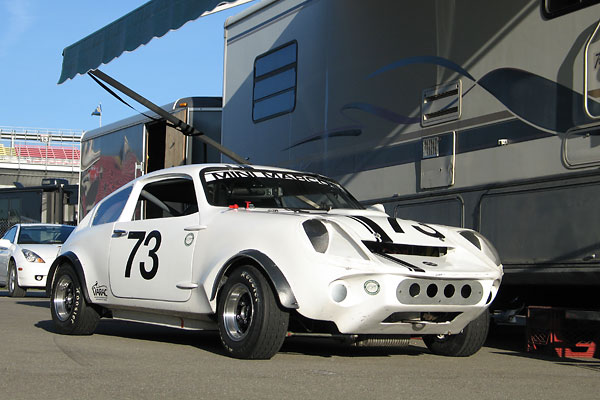
�
Bob Polak's 1969 Mini Marcos, Mark III, Number 73
� � Owner: Bob Polak� City: Cornwall, Ontario
� Model: 1969 Mini Marcos, Mark III¹
� Engine: 1293cc BMC A-series (as used in Mini Cooper S, Mk2)
� Built by: Bill Gilcrease at Mincomp Racing Services�
�
Mini Marcos History
��
The precursor to the Mini Marcos was built in 1964 by professional test pilot and �
amateur aerodynamicist Dizzy Addicott. Addicott foresaw that a BMC Mini could be �
substantially faster if fitted with more streamlined bodywork. He purchased a �
damaged Morris Mini Van, and modified it to prove the point. The body on that first �
prototype was created entirely from steel. It was basically teardrop shaped, but �
with the rear truncated as proscribed by Wunibald Kamm. The front end of the�
prototype was nicely rounded and featured an oval radiator opening, without grille.�
The car came to be known as the DART, which was short for "Dizzy Addicott Racing Team". �
�
The DART prototype captured the interest of Jem Marsh of Marcos Cars. Initially Addicott �
and Marsh planned to work together to industrialize the DART design. The original �
prototype's steel body was used as a plug for making molds, and a handful of �
monocoque fiberglass bodies were subsequently built, but the quality of these early �
bodies was deemed unsatisfactory. The two men had a falling out, and Marsh decided �
that Marcos would create their own Mini-based aerodynamic special. Marcos employees �
Brian Moulton (GRP Manager) and Malcolm Newell (Pattern Maker) are credited with �
styling and design for the new Mini Marcos.�
�
Brian Moulton's personally hand-built prototype debuted in September 1965 at the �
Castle Combe racetrack, where it won its first race decisively. Fitted with a 1293cc �
engine, it lapped the whole 1.6L-class field except for one �
Ginetta G4, and it won by a margin of 82 seconds�
in the ten lap race. Five months later, Marcos was ready to offer the Mini Marcos for �
sale at the annual Racing Car Show at Earl's Court, London. �
�
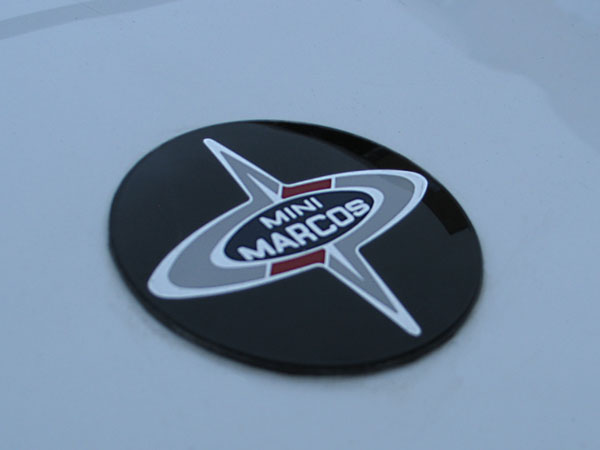
�
Mini Marcos badge.
�
�
At the Earl's Court show, Jem Marsh made the personal connections that led to a �
Mini Marcos being entered at LeMans later in 1966. The LeMans organizers have �
always been notoriously jingoistic and there was no way they would have let Marcos �
enter their new British "kit car" directly. One must be invited to race at LeMans.�
However, it was felt that they might be persuaded to allow a French team to enter �
the car if it were built-up in France and piloted by French drivers. That was precisely �
how it happened that Jean Louis Marnat, as a privateer, achieved so much with the new �
Mini Marcos. �
�
�
Enjoying this article? www.BritishRaceCar.com is partially funded through generous support from readers like you!
�
To contribute to our operating budget, please click here and follow the instructions.
�
(Suggested contribution is twenty bucks per year. Feel free to give more!)�
�
Marnat's Mini Marcos was the only British car to finish Le Mans in 1966! He finished �
fifteenth overall, and fifth in the 1.3L Prototype class behind four Renault-powered �
Alpines. (Paddy Hopkirk's works Sprite suffered a head gasket failure, and was �
twenty-one laps behind the Mini Marcos when the race was declared over.) This was�
a remarkable finish; the little car demonstrated that it could reach over 130mph on �
the famous Mulsanne Straight, and that it was strong enough to maintain a very high �
average speed over the duration. It was an especially remarkable achievement in �
light of how hurried and how low-budget the car's preparation for the race had been. �
�
After this proof of worthiness, Marcos Cars could hardly be denied an invitation to �
compete at LeMans in 1967. Alas, the factory team was unlucky. They suffered an oil�
pump failure on the eleventh lap and retired from the race. However, their somewhat �
more streamlined Mini Marcos Mark III was clocked at 141 mph on the Mulsanne Straight.�
�
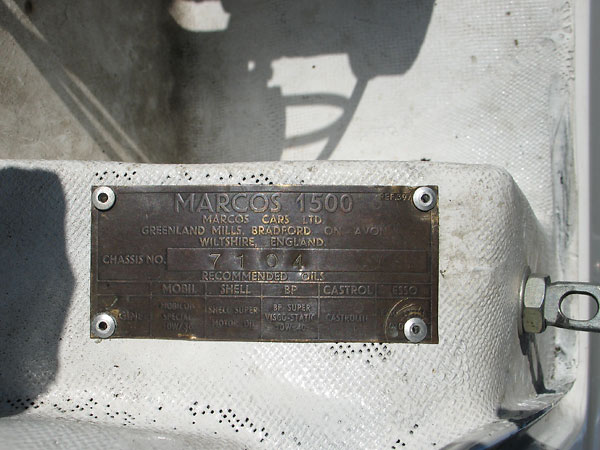
�
MARCOS 1500 - Chassis No. 7104
�
Marcos Cars Ltd., Greenland Mills, Bradford on Avon, Wiltshire, England.
�
(Recommended Oils: Mobil, Shell, BP, Castrol, Esso...)
�
�
 �
�
�
�
Bob Polak's Mini Marcos
��
Bob Polak bought Marcos 7104 in January 2007 from Jeremy Bannister of Pennsylvania. �
The car had been imported to U.S.A. in 2002, and it's one of only a handful of �
Mini Marcos cars in North America. �
�
Features and Specifications
�| Engine: | �1293cc BMC A-series as used in the Mini Cooper range, built with an "A+" block. �
Keith Calver custom built cylinder head. ~11:1 static compression ratio. �
Kent Cams camshaft. Forged 1.5:1 rocker arms. (The engine was built for shifting �
at about 7500rpm.) Weber 45DCOE carburetor on 6" Dellorto (4030) cast aluminum �
intake manifold. K&N gauze air filter. Aldon Automotive distributor with �
Pertronics Ignitor pick-up. Lumenition adjustable rev limiter. �
Electrically-actuated Accusump system.�
| �
| Cooling: | �Super Two Core radiator and stock Mini Cooper oil cooler. | �
| Exhaust: | �Long Center Branch (LCB) header. Flowmaster two chamber muffler. | �
| Transmission: | �stock 4-speed FWD transmission and clutch system, upgraded with Tran-X �
limited slip differential, Tran-X straight cut transfer gears, �
and 3.9:1 straight cut final drive. | �
| Front Susp.: | �per class requirements, stock Mini Cooper S (Moulton rubber cone) �
upgraded with negative camber A-arms and GAZ adjustable shock absorbers. | �
| Rear Susp.: | �per class requirements, stock Mini Cooper S (Moulton rubber cone), �
upgraded with GAZ adjustable shock absorbers and a tubular anti sway bar. | �
| Brakes: | �(master) Lockheed dual-circuit master cylinder. Speedway Motors bias valve on rear circuit. � (front) per class requirements, Lockheed Cooper S single piston calipers. � Goodridge braided stainless hoses. Performance Friction (PFC) "01" compound brake pads. � (rear) Mini Cooper S drum brakes. Goodridge braided stainless hoses. | �
| Wheels/Tires: | �Revolution 10" wheels with Hoosier T.D. 165/70 tires. | �
| Electrical: | �Mincomp gear reduction starter. Lucas alternator. Wet cell battery (Group 41 size.) | �
| Instruments: | �(left to right)�
Autometer ProComp coolant temperature gauge (140-280F),�
Autometer ProComp Memory tachometer (0-10,000rpm), �
Autometer ProComp oil pressure gauge (0-100psi), �
Autometer ProComp oil temperature gauge (140-280F). | �
| Fuel System: | �Fuel Safe 6 gallon fuel cell. Facet Blue-top fuel pump. Holley low pressure adjustable regulator. | �
| Safety Eqpmt: | �Ultra Shield Race Products drivers seat. �
Crow Enterprises 5-point latch and link safety harness. M&R mesh window net.�
Mark Williams Enterprises quick release steering wheel hub on a Grant steering wheel.�
SPA "Firefighter" mechanically-actuated, aqueous film forming foam fire suppression system. | �
| Weight: | �1345 pounds with five gallon fuel load. | �
| Completion: | �Construction of this racecar was completed in September 2008, and as �
of September 2009 it had completed twelve races. | �
| Racing Class: | �SVRA "1FP" (F-Production) | �
Engine Installation
��
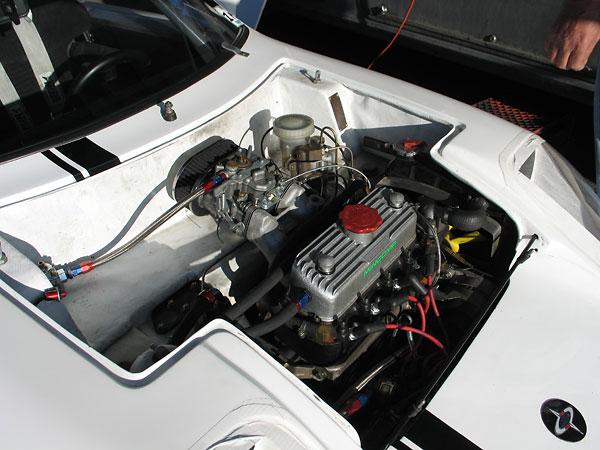
�
BMC A-series engine as used in classic Minis. This one displaces 1293cc.
�
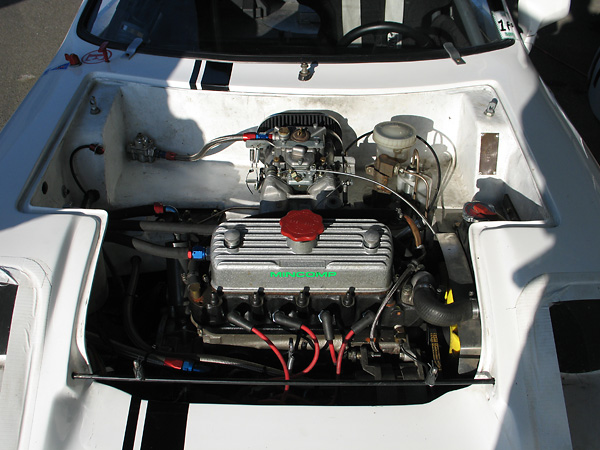
�
Engine prepared by: Bill Gilcrease at Mincomp Racing Services.
�
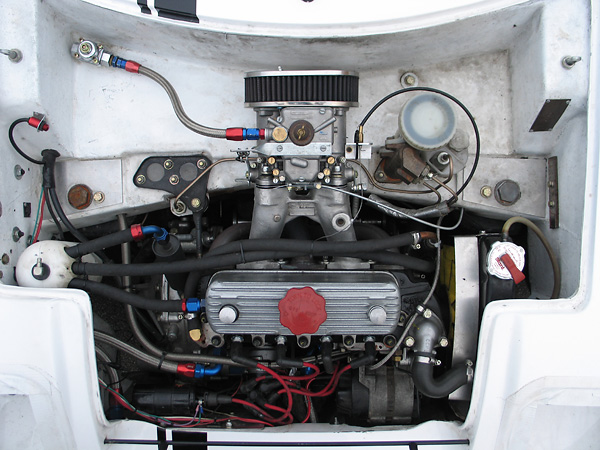
�
The Mini Marcos came with a front-mounted radiator, whereas regular Minis had side-mounted radiators.
�
This particular Mini Marcos has the radiator side-mounted to meet the letter of the SVRA class rules.
�
However, on a stock Mini the radiator mounts to the engine whereas this radiator is mounted to the body.
�
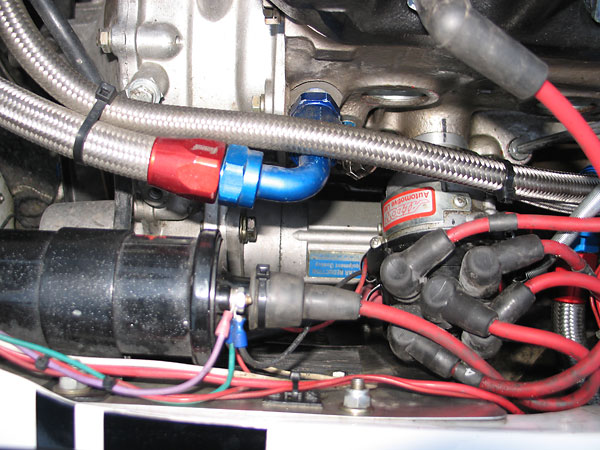
�
Aldon Automotive distributor with Pertronics Ignitor pick-up. Mincomp gear reduction starter.
�
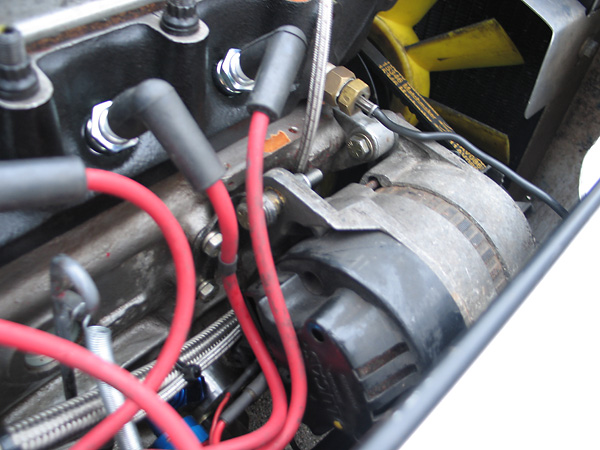
�
Lucas alternator.
�
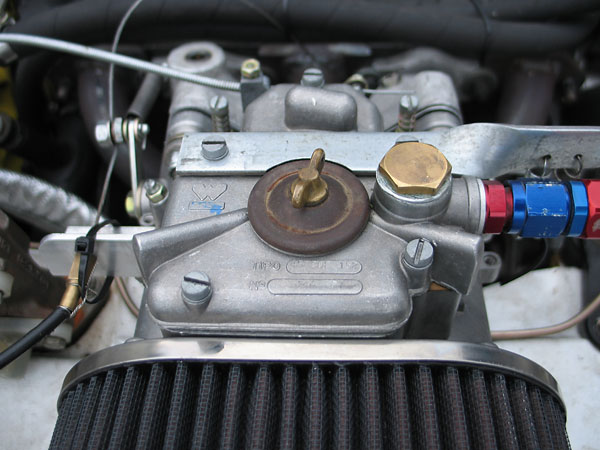
�
Weber DCOE carburetor on 6" Dellorto (4030) cast aluminum manifold, fitted with K&N gauze air filter.
�
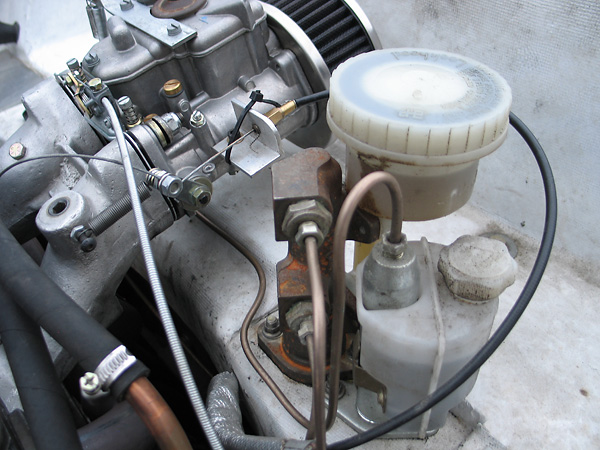
�
Lockheed dual-circuit iron brake master cylinder and Lockheed aluminum clutch master cylinder.
�
Note also that a choke cable has been installed.
�
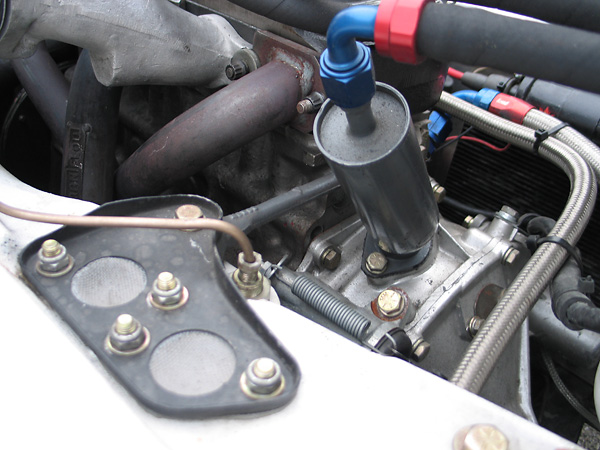
�
This is a stock Mini oil separator, except with a "dash 8" fitting installed for the breather plumbing.
�
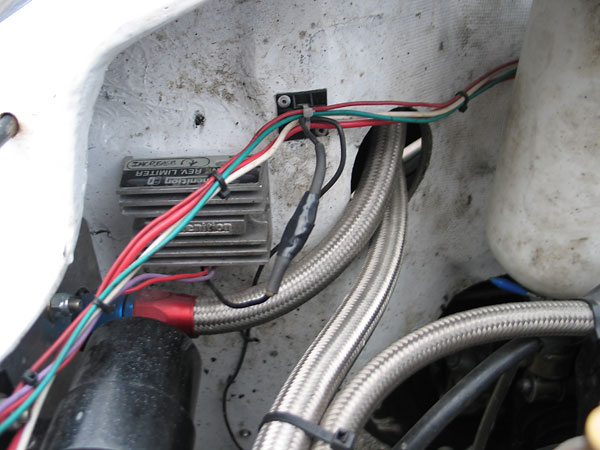
�
Lumenition adjustable rev limiter.
�
�
Suspension
��
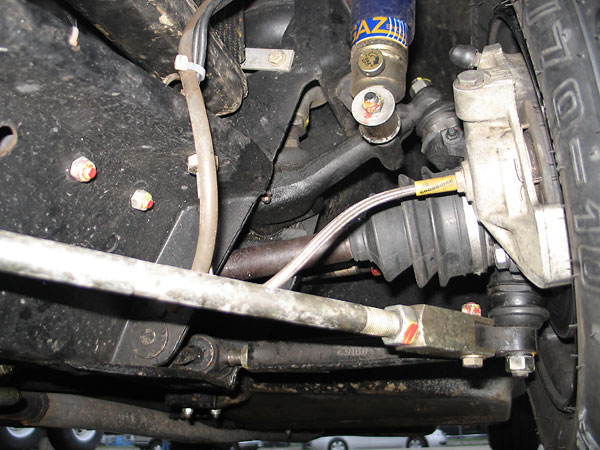
�
Stock Mini Cooper S (Moulton rubber cone) suspension, upgraded with adjustable negative camber A-arms.
�
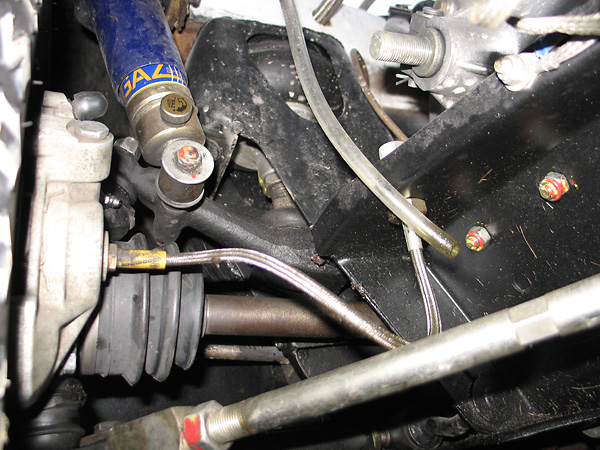
�
GAZ adjustable front shock absorbers. Note that no front anti-sway bar is deemed necessary.
�
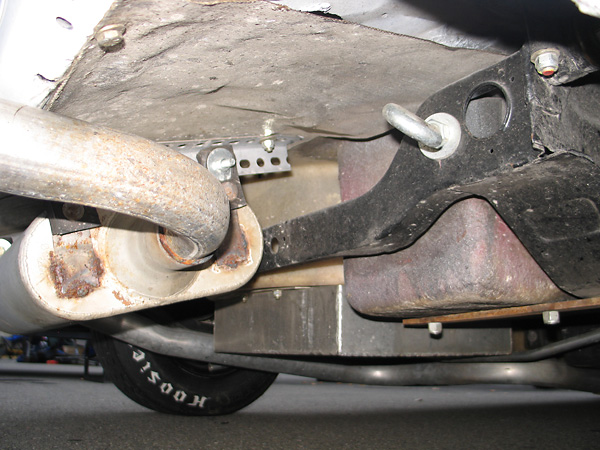
�
Mini Marcos cars utilize stock Mini front and rear subframes.
�
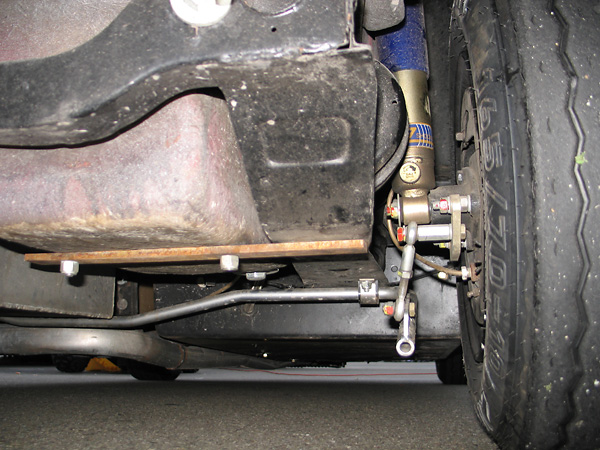
�
GAZ adjustable rear shock absorbers.
�
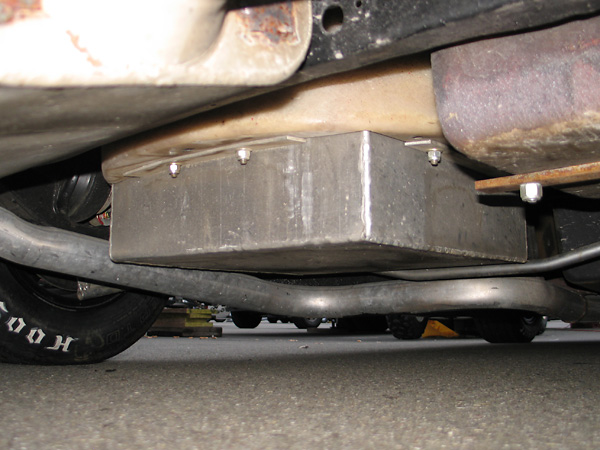
�
The aluminum fuel cell housing protrudes through the floor of the spare tire well.
�
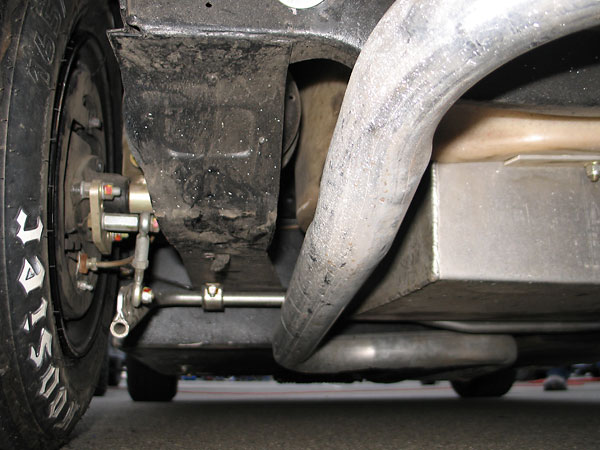
�
Tubular rear anti-sway bar.
�
�
Interior
��
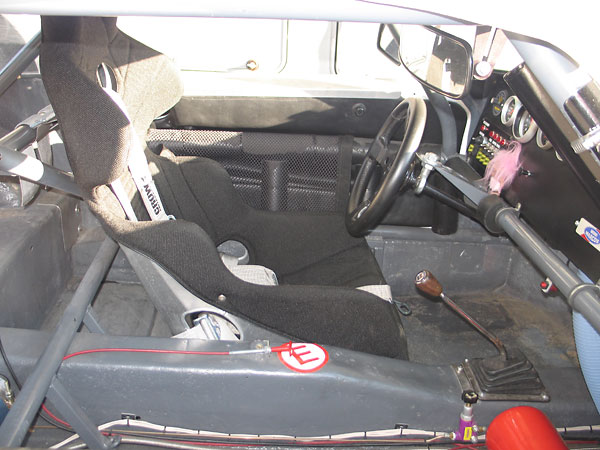
�
�
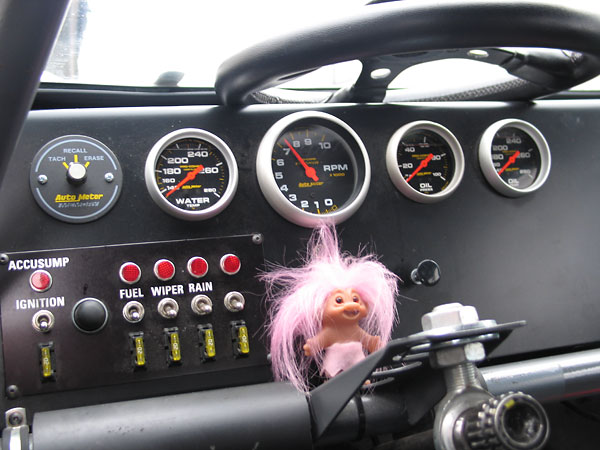
�
(left to right) Autometer ProComp coolant temperature gauge (140-280F), Memory tachometer (0-10,000rpm),
�
oil pressure gauge (0-100psi), and oil temperature gauge (140-280F).
�
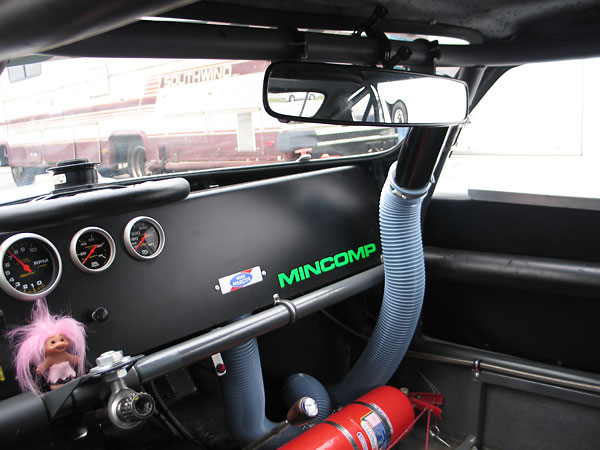
�
(The blue corrugated tubing was part of an experimental ventilation system.)
�
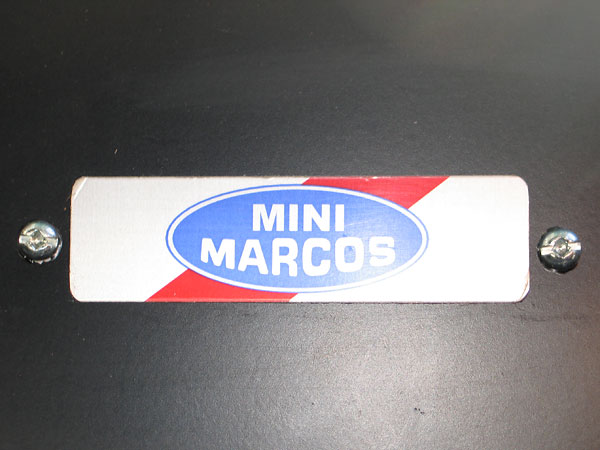
�
Mini Marcos dash plaque.
�
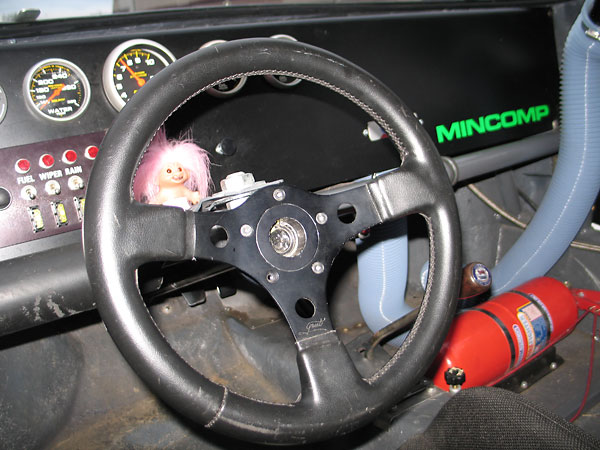
�
Grant steering wheel.
�
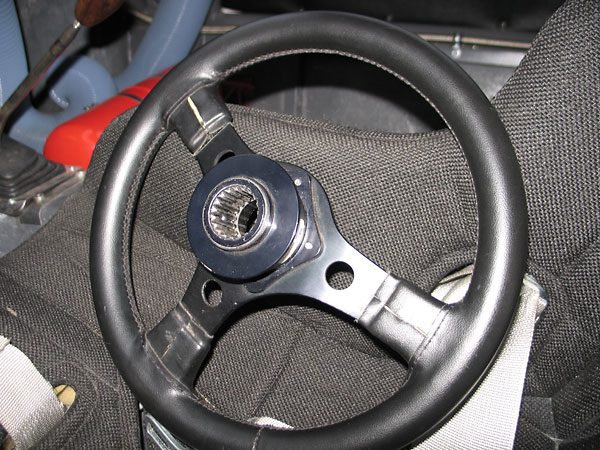
�
Mark Williams Enterprises splined quick release steering wheel hub bolts directly to the Grant steering wheel.
�
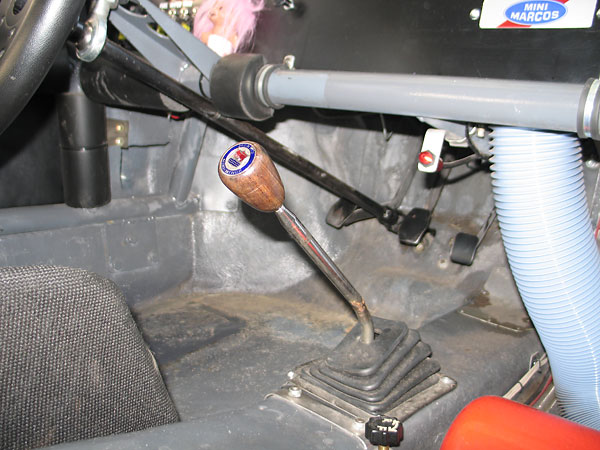
�
The small print on the knob reads: "Morris" (above) and "Mini-Minor" (below).
�
The Morris logo shows an ox crossing a stream, because Morris was originally based in Oxford.
�
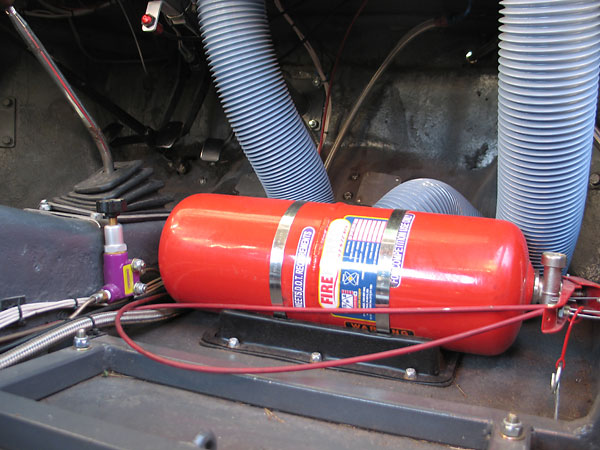
�
SPA Firefighter mechanically-actuated, aqueous film forming foam fire suppression system.
�
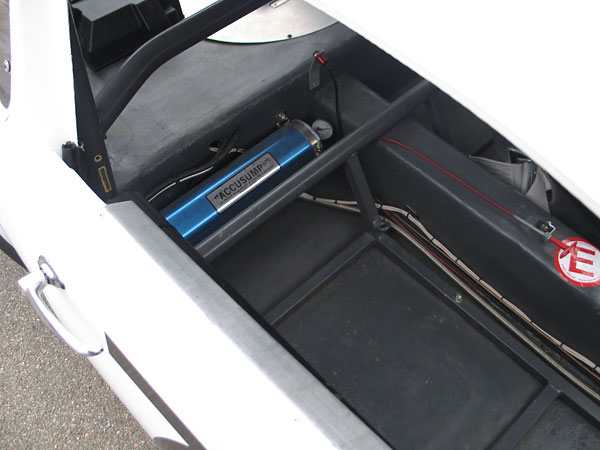
�
Accusump pressurized oil reservoir. (Provisions for safely mounting a passenger seat have also been included.)
�
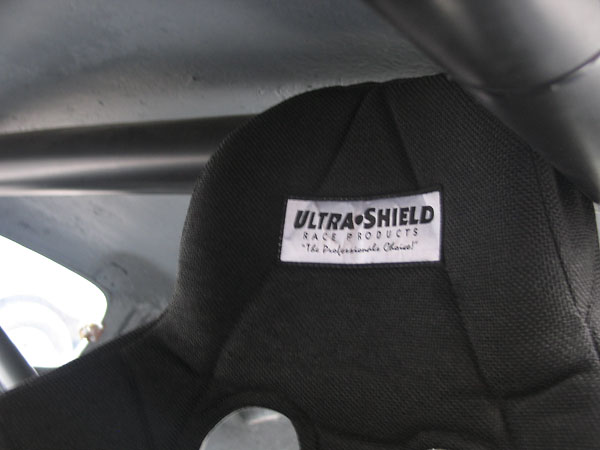
�
Ultra Shield Race Products drivers seat.
�
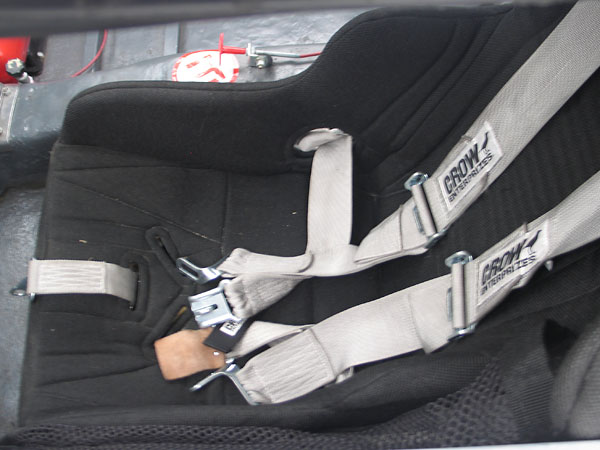
�
Crow Enterprises 5-point latch and link safety harness.
�
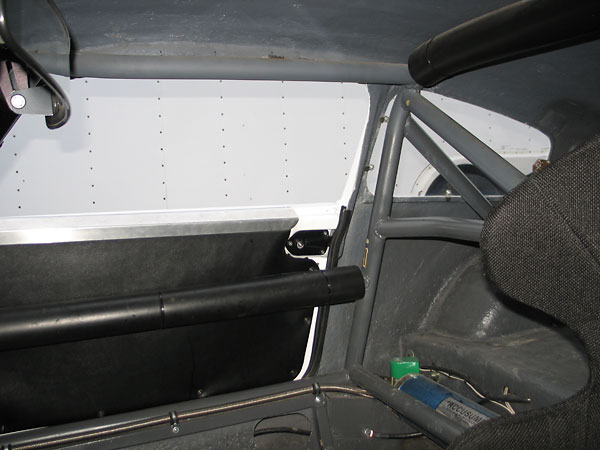
�
Roll cage construction details.
�
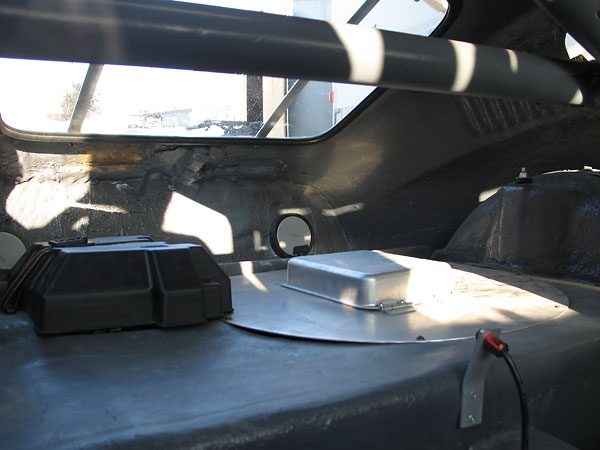
�
Right foreground: fire suppression system nozzle.
�
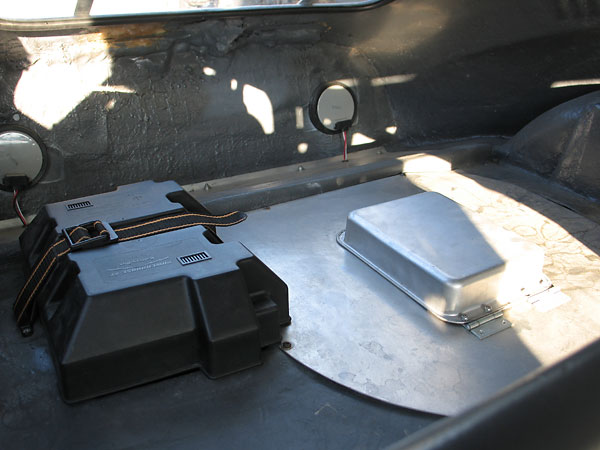
�
Left: Attwood "Sea Guard" marine battery case.
�
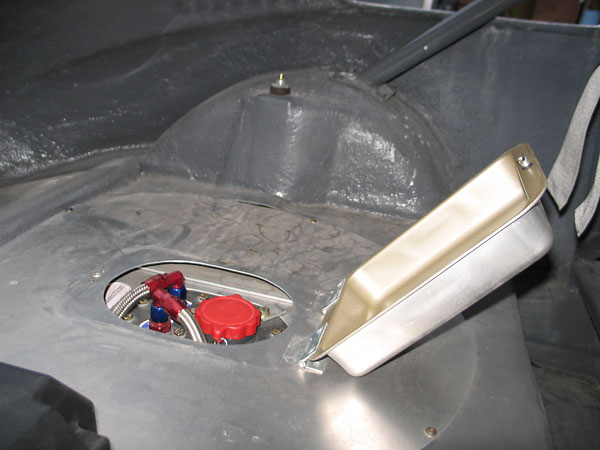
�
Fuel Safe 6 gallon fuel cell, installed in a custom aluminum canister.
�
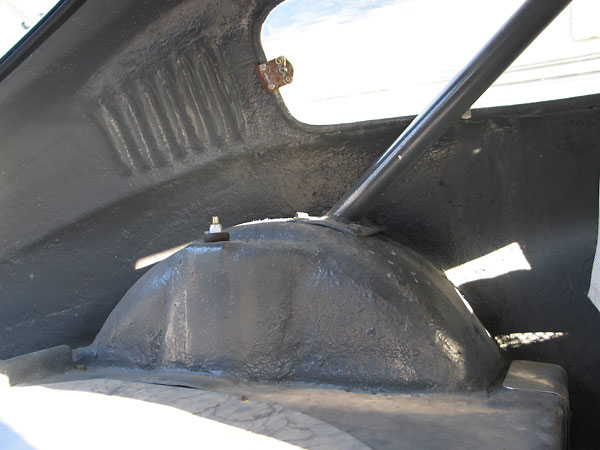
�
Fiberglass body.
�
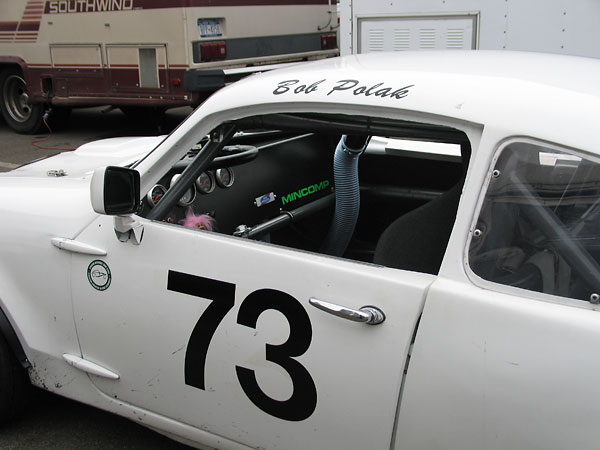
�
Bob Polak, Number 73.
�
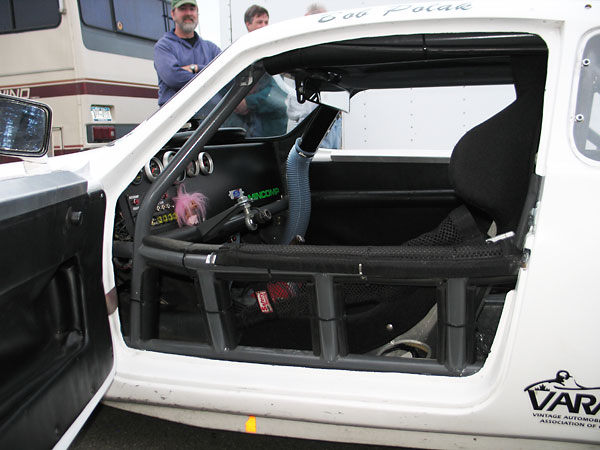
�
Rollcage: well braced against encroachment from the side.
�
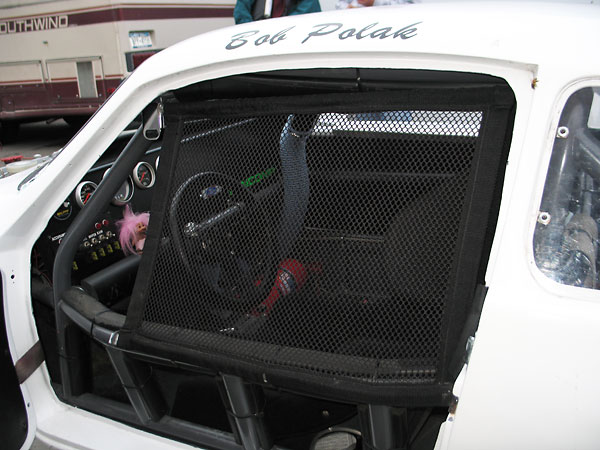
�
M&R mesh window net.
�
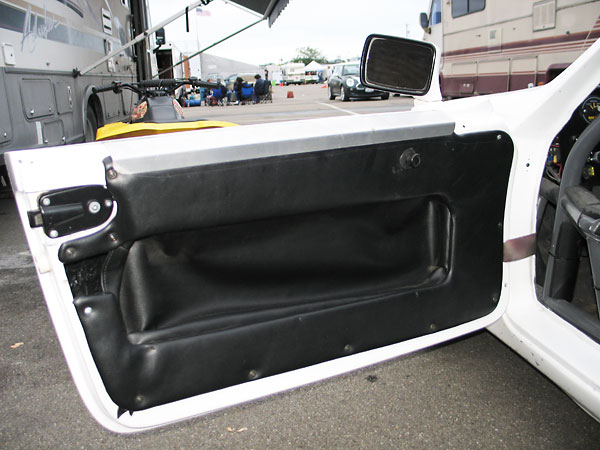
�
Door pocket and latch assembly.
�
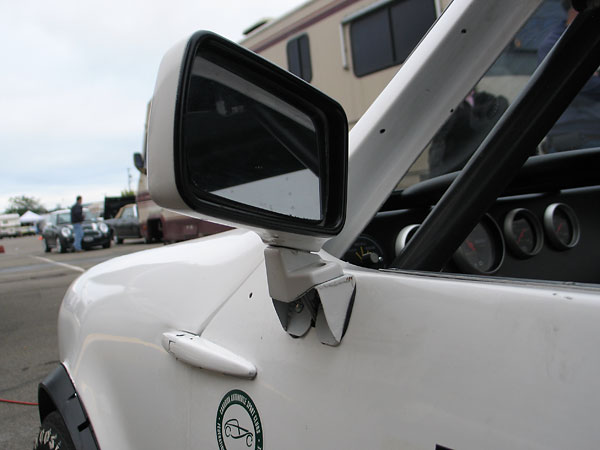
�
Side view mirror.
�
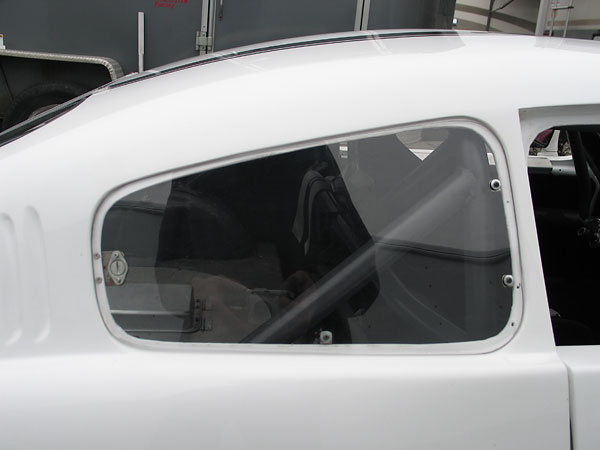
�
Dzus quarter-turn fasteners retain the elegantly simple removable polycarbonate side vents.
�
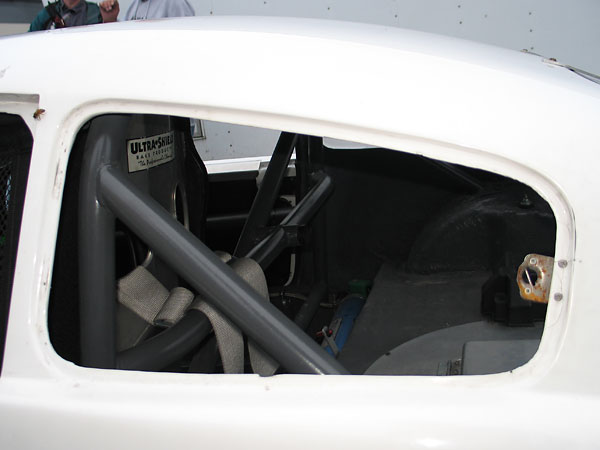
�
Only one Dzus clip per side!
�
�
Exterior
��
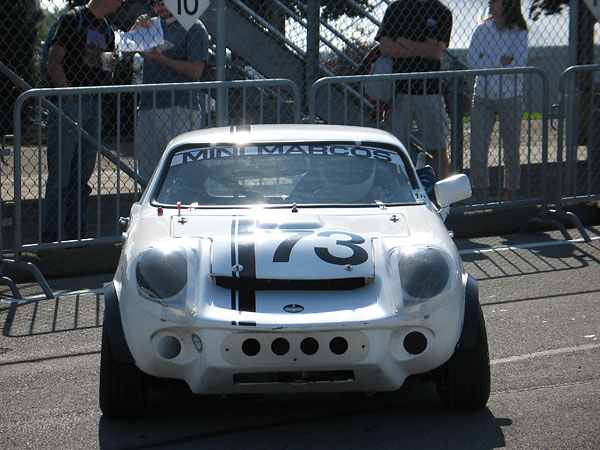
�
Mini Marcos (with a whole lot of negative camber!)
�
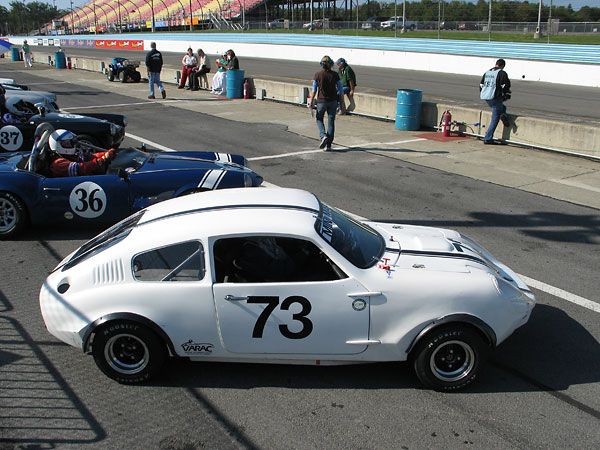
�
This little giant killer eats Spitfires for breakfast.
�
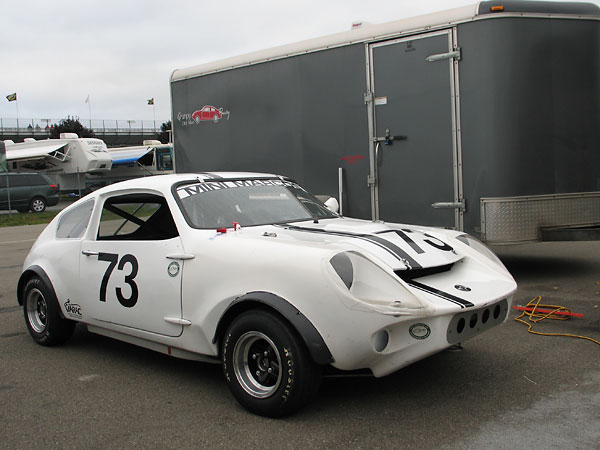
�
What an irresistible, cheeky little runt!
�
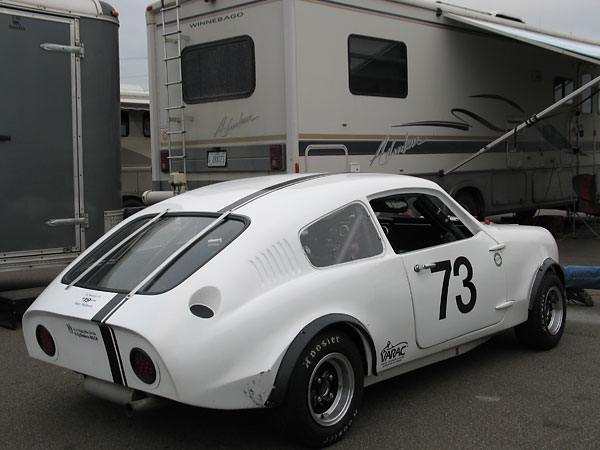
�
A recessed fuel filler was first introduced with the "Mk3" cars. Wheel opening shape also changed.
�
The standard rear window didn't open, but a hinged rear hatch became optional later in the build.
�
The rear window is actually more curved than it appears in this photo. (It's glass instead of plastic.)
�
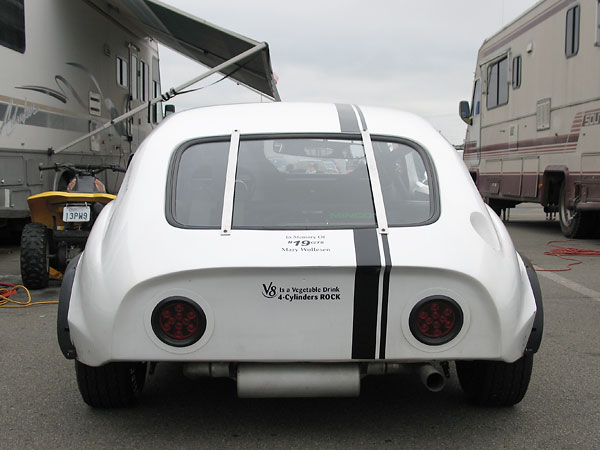
�
Fightin' words: "V8 is a vegetable drink. Four cylinders rock."
�
Note also the LED tail lights.
�
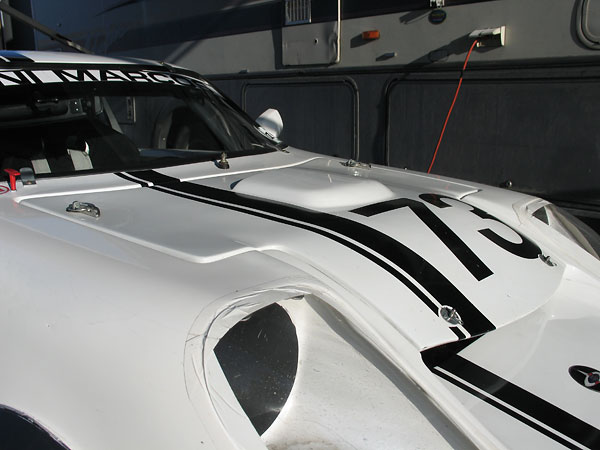
�
British bulldog inspired styling?
�
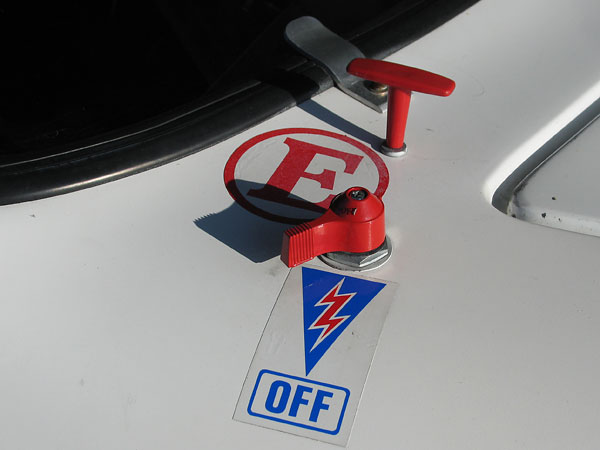
�
Emergency kill and fire suppression switches.
�
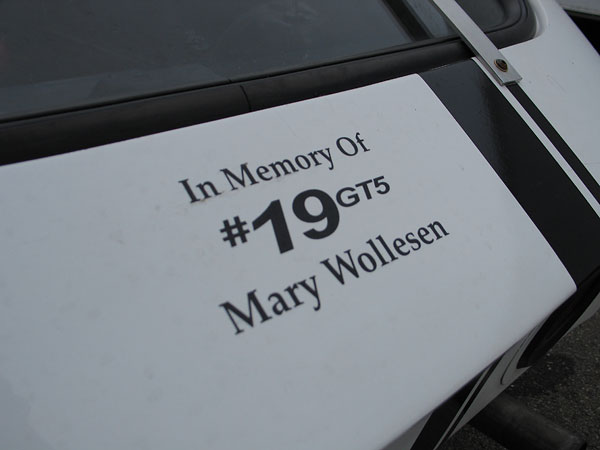
�
"In memory of Mary Wollesen, #19 GT5"
�
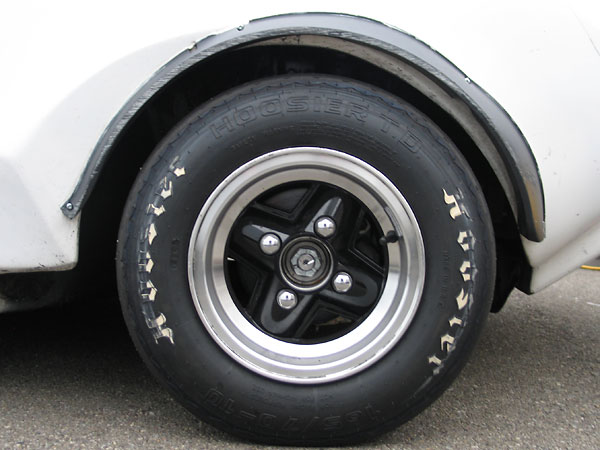
�
Revolution 10" wheels. Hoosier T.D. 165/70 tires.
�
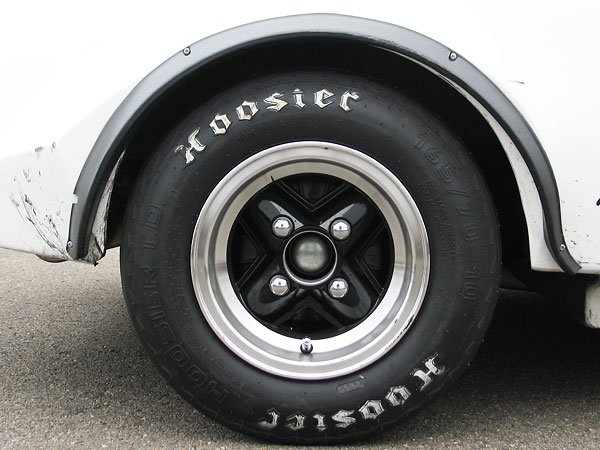
�
The stock, bolt-on Mini fender flairs were a late addition, installed to satisfy SVRA's technical inspector.
�
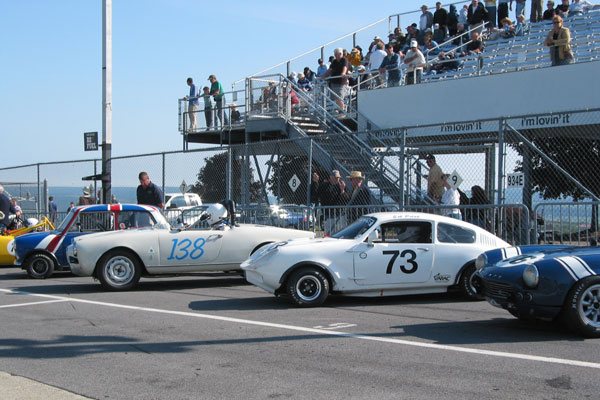
�
U.S. Vintage Grand Prix, September 2009: shown here in the pre-grid, Bob's best lap of the Watkins Glen
�
circuit was 2:35.074 and he finished eleventh of thirty-three entries. He was also honored with the
�
Optima Battery Award for sportsmanship in this race.
�
| Notes: | |||||||
| (1) | �
It's difficult to precisely differentiate between a Mark II and a Mark III body.�
Their production dates seem to overlap, but certainly Mark II production started �
near the beginning of 1967 and Mark III production ended around the end of 1970.�
The original company, Marcos Cars, declared bankruptcy in 1971. Production of Mini �
Marcos bodies resumed under three subsequent companies. Mark IV production was from �
1974 to 1981, Mark V production was from 1991 to 1996, and Mark VI production �
started in 2005. Even while Marcos Cars was in business, some Mini Marcos bodies �
were built under license by small companies outside of England. Marcos Cars primarily�
offered Mini Marcos bodies in kit-car form, but they also built up and sold a few �
complete cars. It seems impossible to determine exactly how many Mini Marcos bodies �
were produced in total, and it's certainly impossible to determine how many of the�
kits were completed by their respective buyers. The total seems to be in the �
ballpark of 1300 cars.�
� | ||||||
�
All photos shown here are from September 2009 when we viewed the car at The US Vintage Grand �
Prix at Watkins Glen. All photos by Curtis Jacobson for BritishRaceCar.com, copyright 2009. �
All rights reserved.
�
| If you liked this article, you'll probably also enjoy these: | �|||||
 | �
Andy Seward 1962 Marcos GT | �
 | �
Vic Schuster 1965 Turner MkIII | �
 | �
Rachel Nelson 1965 Cooper S | �
| You're invited to discuss anything you've seen here on The British Racecar Motorsports Forum! | �|||||
�
Notice: all the articles and almost all the photos on BritishRacecar.com are by Curtis Jacobson.
�
(Photos that aren't by Curtis are explicitly credited.) Reproduction without prior written permission is prohibited.
�
Contact us to purchase images or reproduction permission. Higher resolution images are optionally available.
�

 �
�